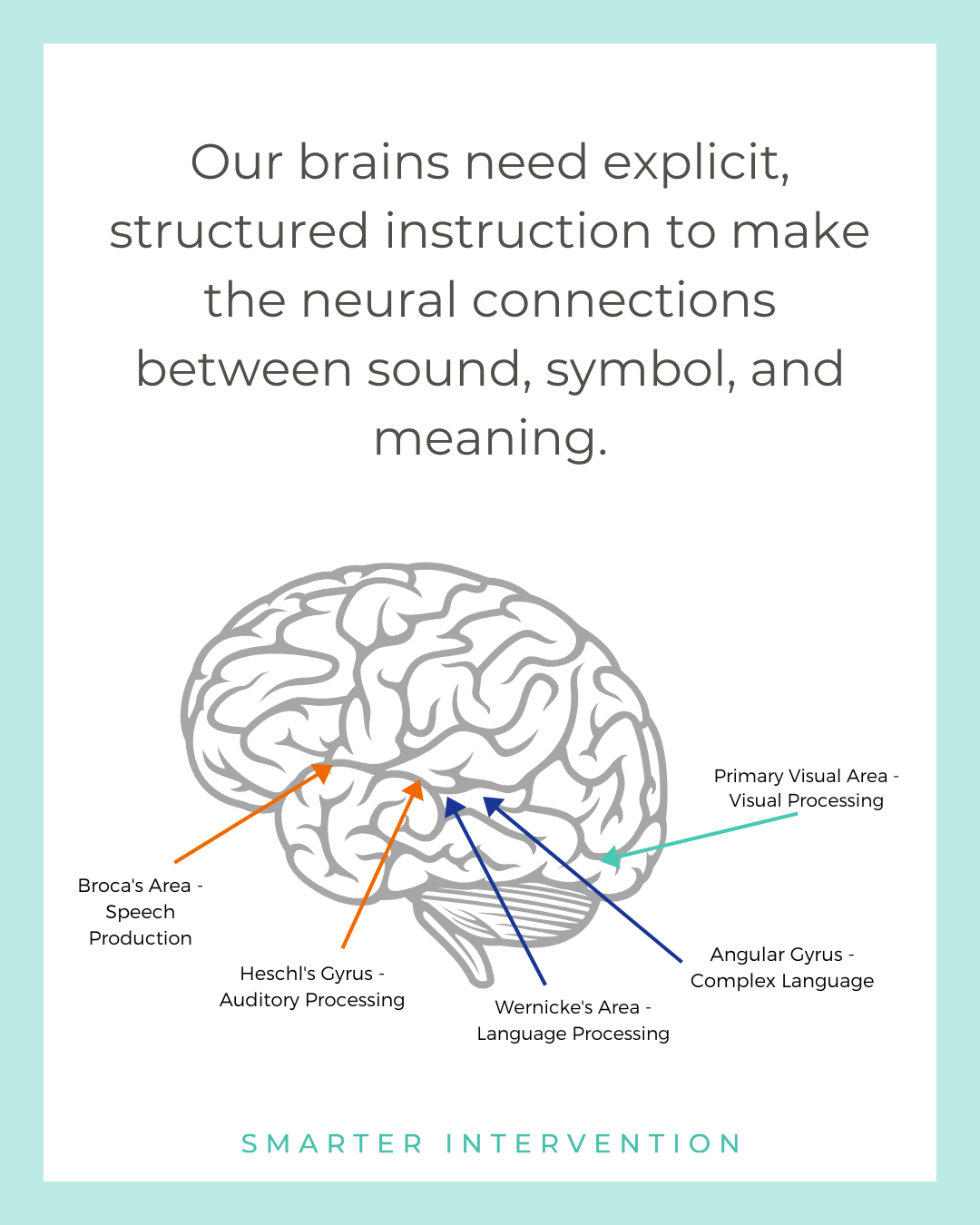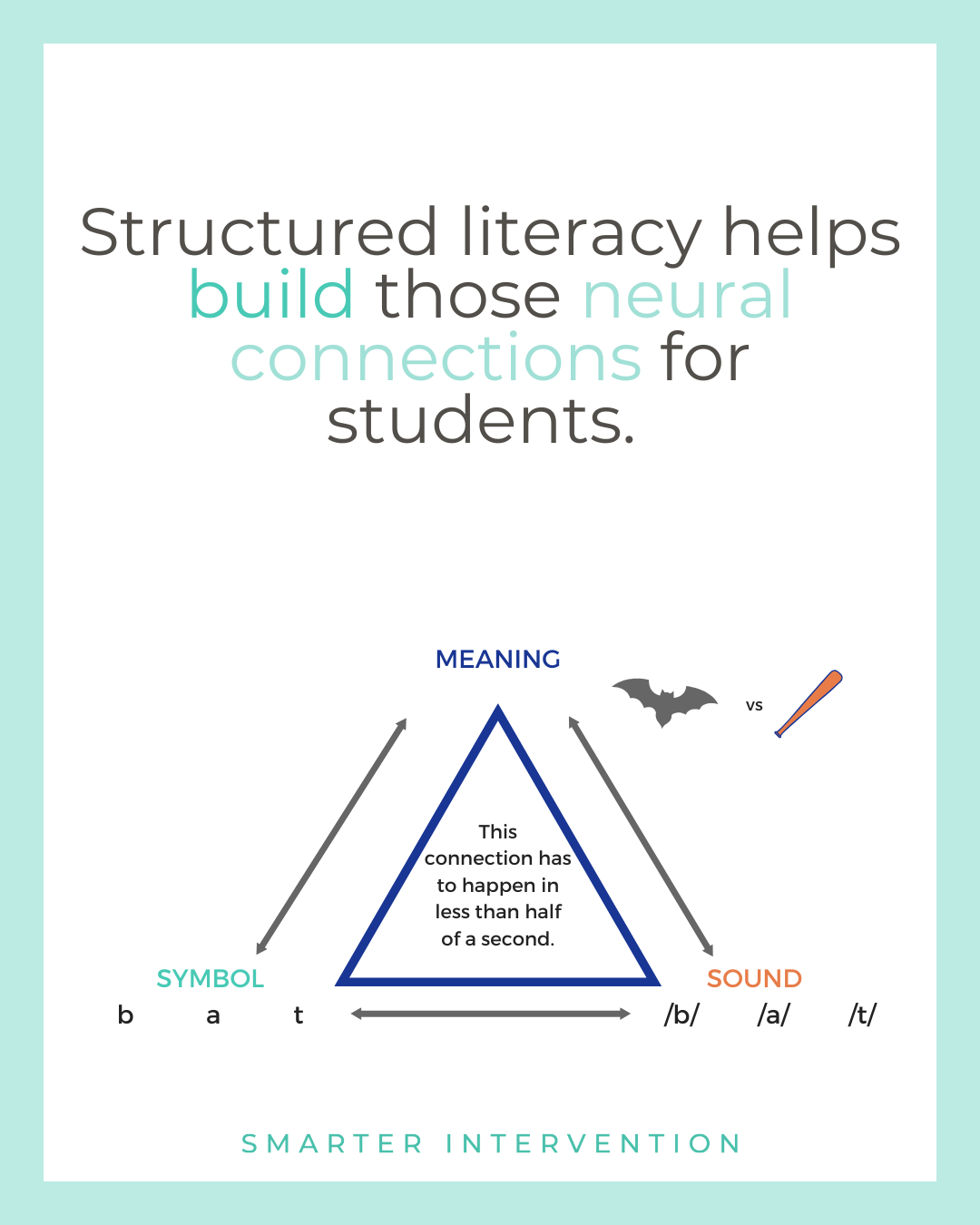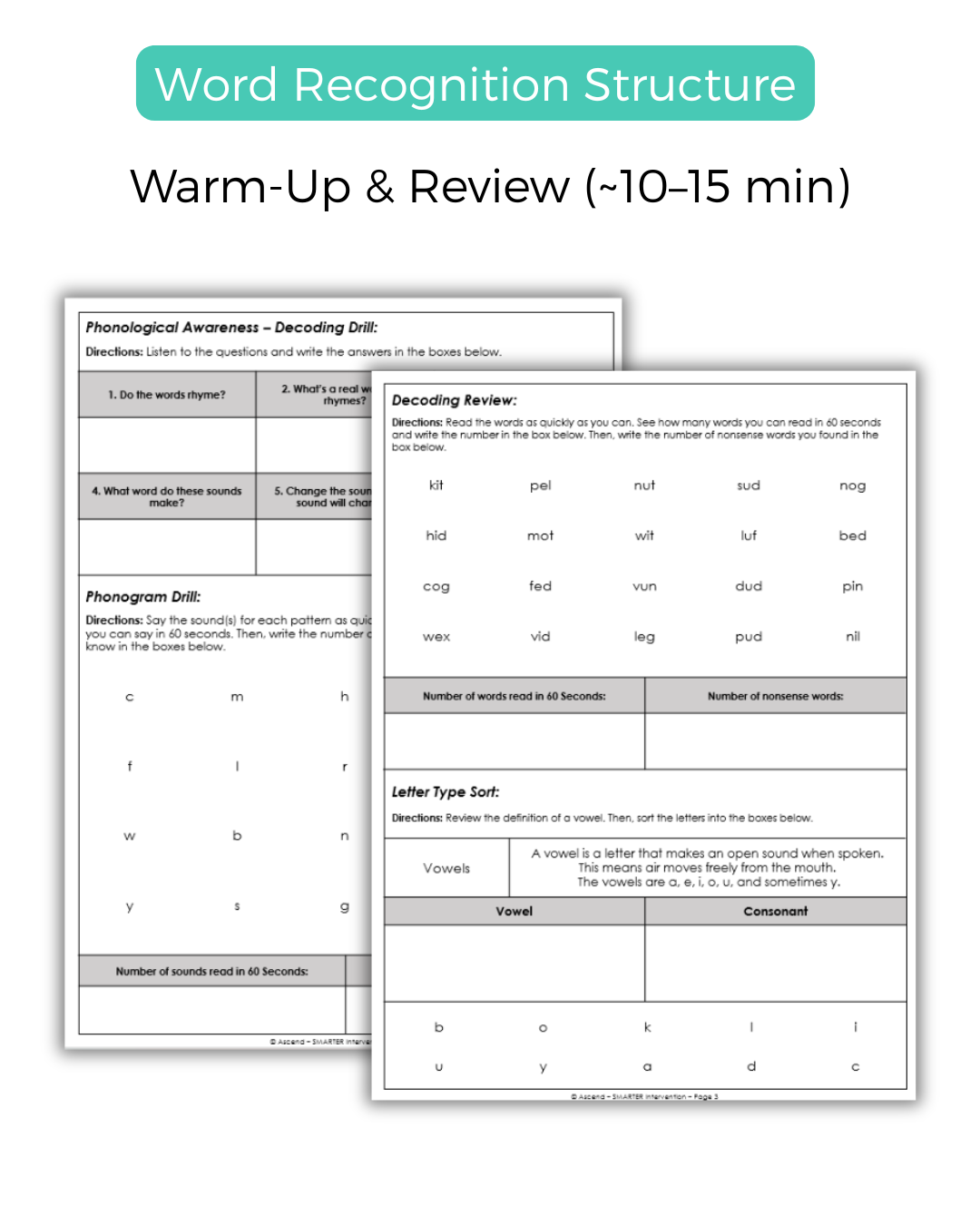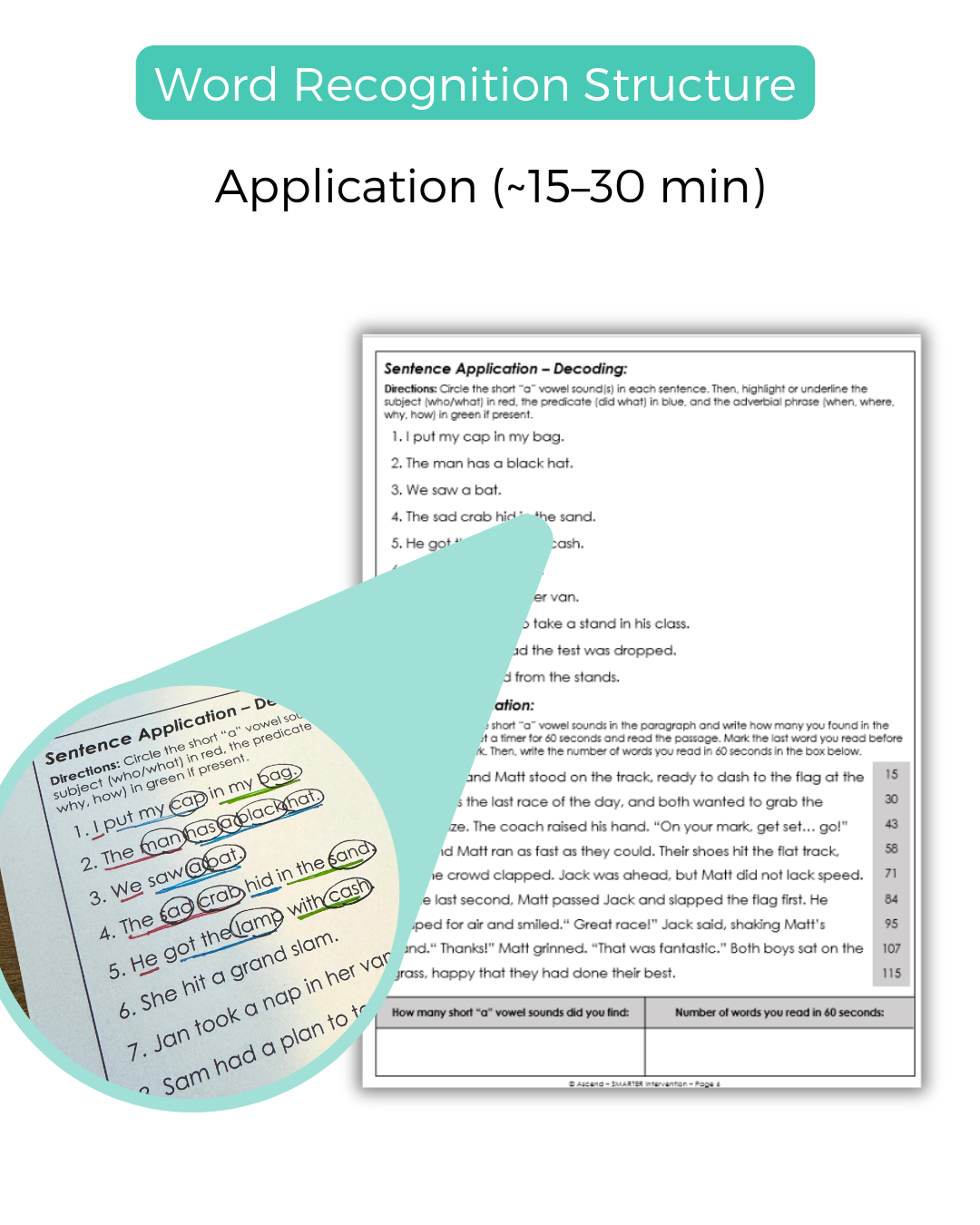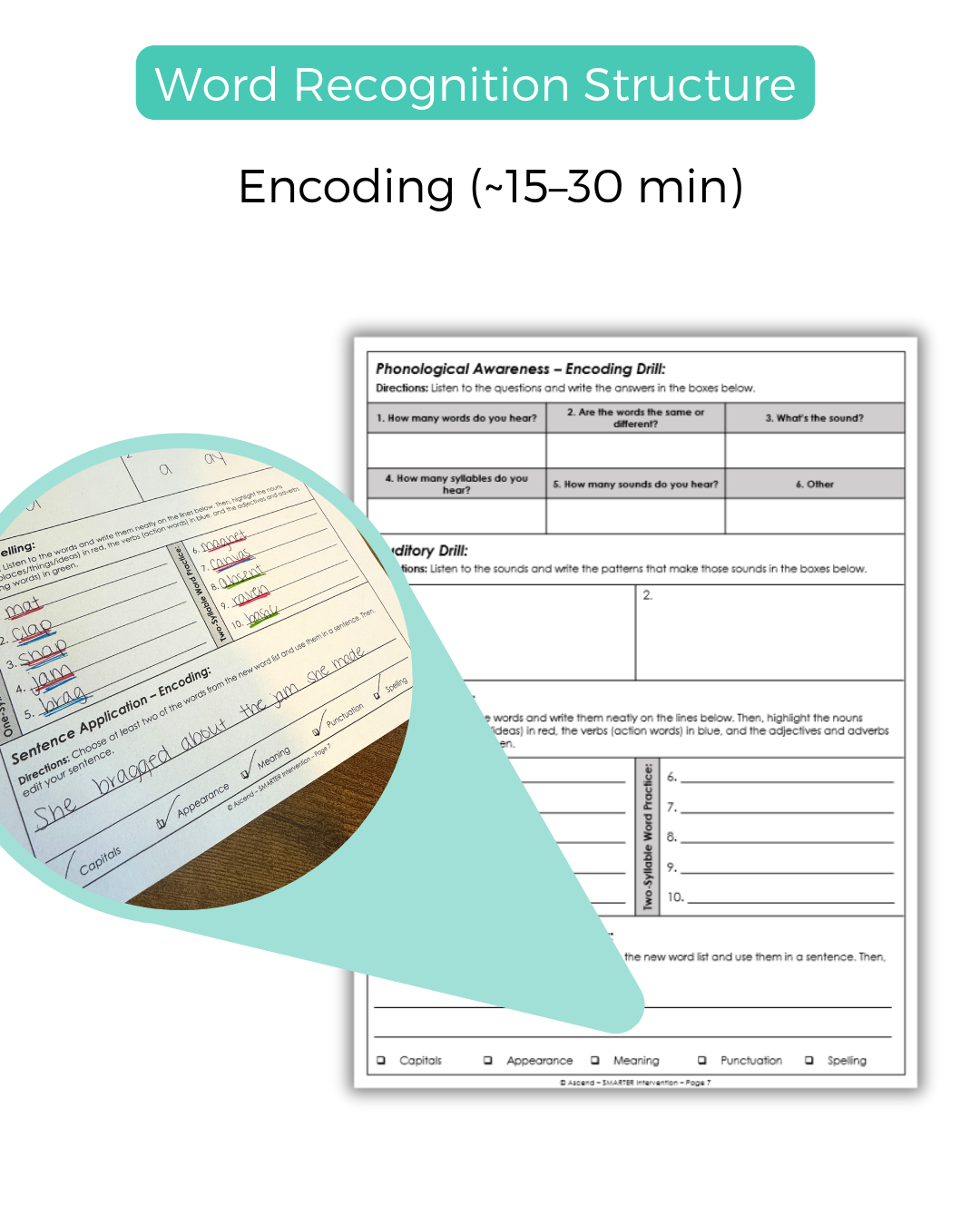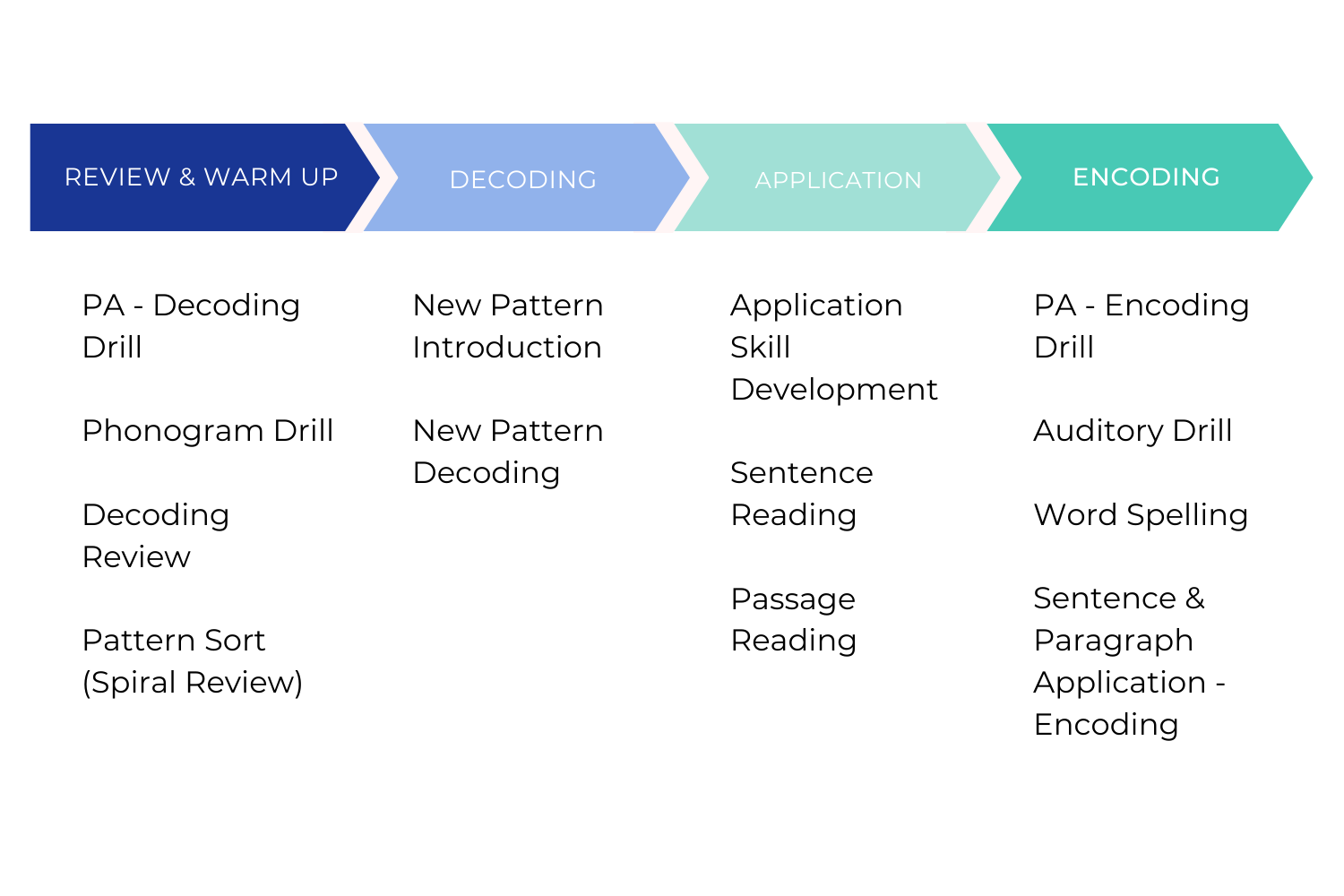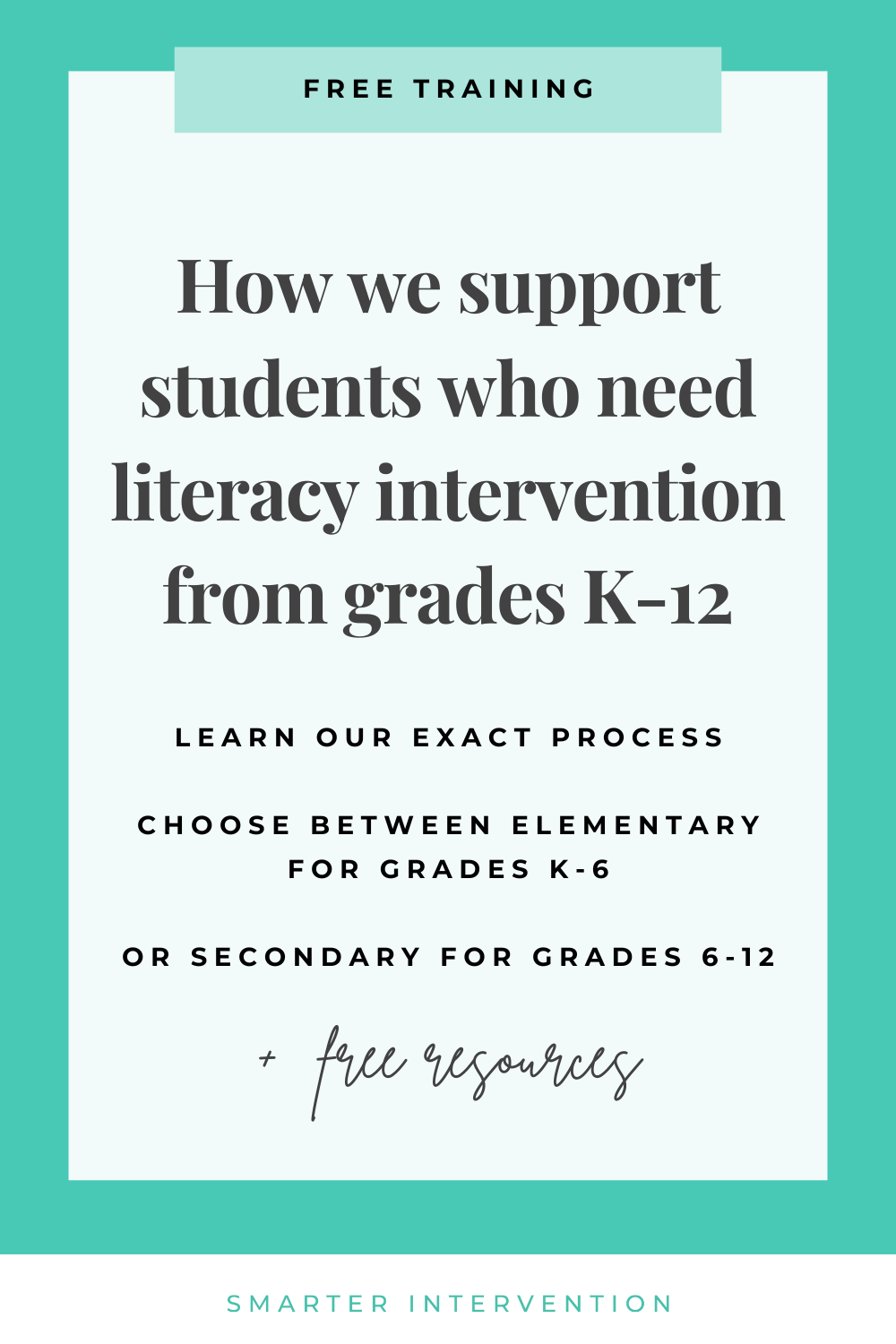What does a Structured Literacy Lesson Actually Look Like?
If you’ve been with us for a while, you know how passionate we are about Structured Literacy. But if you’re still wondering exactly what it means (and how it looks in practice), you’re not alone.
What is Structured Literacy?
Structured Literacy is an approach to reading instruction that is systematic, explicit, and evidence-based.
Instead of leaving learning to chance, it teaches rules, concepts, and patterns in a logical sequence that builds over time. Students are not expected to “pick up” phonics, vocabulary, or comprehension skills incidentally. Every skill is taught directly and practiced with intention.
Most importantly, Structured Literacy encompasses all five core components of literacy:
Phonological Awareness
Phonics
Vocabulary
Reading Fluency
Comprehension
This balanced approach ensures that students build strong word-level reading skills while also making sense of what they read.
Why Does Structured Literacy Matter?
Research has shown that all students (not just those with reading difficulties) benefit from Structured Literacy. By explicitly teaching the structure of language, we give learners the tools they need to read with accuracy, fluency, and understanding. It’s about creating strong neural connections for reading, so students can move from sounding out words to truly understanding and enjoying text.
What Does a Structured Literacy Lesson Look Like?
A Structured Literacy lesson has a predictable flow. Students know what to expect, and teachers know that each critical component of reading is being addressed. A lesson typically looks something like this:
Review & Warm Up
Phonological Awareness - Warm-up drill to help students practice manipulating sounds in words
Sound Practice – Continuing the warm-up with phonogram drills (students see a letter or letter combination and respond with the sound).
Review – Reinforcing previously taught skills through practice, decoding previously instructed patterns, and then practicing sorting words based on previously instructed concepts (e.g., closed syllables versus open syllables).
Decoding
Explicit Teaching of a New Concept – Introducing a new sound, spelling pattern, or language rule explicitly in isolation (e.g., -ck says /k/ or a says /a/ in closed syllables and /A/ in vowel-consonant-e, open, and vowel team syllables).
We always want to teach students the patterns and the rules around when and why we use the pattern.
Practice at the Word Level – Students apply the new concept at the word level. This may include single-syllable and multisyllabic decoding. It can also be helpful to have students identify real versus nonsense words.
It is also helpful to have students use word reading practice as an opportunity to discuss vocabulary. We will often have students practice using the Definition Framework for a few of the words they’ve read.
Or, we migh have students rate their knowledge on the Receptive Vocabulary rating scale (1 - This might be a nonsense word to 4 - I can define this word using the Definition Framework).
Application
Application Skill Development - This might be tied back to phonological awareness, vocabulary, or understanding different contexts for the rule (e.g., when we use -ck versus k or c).
Connected Text – Moving into sentences, controlled passages, or stories that give students the opportunity to apply skills in context. Layering in vocabulary, oral reading practice, and discussion to connect meaning with accuracy.
We always want to start at the phrase or sentence level and then progress into paragraph-level and passage-level practice.
The goal here is that students can see how this pattern shows up at different levels of text, and it’s a great opportunity to practice sentence structure, discuss grammar as appropriate, and help them bridge the connection between sounds, words, and the “real-reading” application.
Encoding
Phonological Awareness - Warm-up drill to help students practice manipulating sounds in words
Sound Practice – Continuing the warm-up with auditory drills (students hear a sound and respond by writing the letter or letter combination).
Spelling and Dictation – Strengthening encoding skills through word and sentence writing practice.
Connected Text Writing – Providing students with the opportunity to further solidify their pattern knowledge, sentence syntax, etc.
And that’s it! Then, follow the same lesson structure for the next sound pattern.
Want to See It in Action?
Join us for one of our FREE on-demand PD trainings to learn more about the 5-step framework we use to fit everything into our structured and systematic intervention lessons.
If you work in the elementary setting - Check out our training, Delivering Effective Elementary Literacy Intervention: The 5-Step Framework for Grades K-6 to learn more and get free resources you can use to support your instruction!
If you work in the secondary setting - Check out Delivering Effective Secondary Literacy Intervention: The 5-Step Framework for Grades 6–12 to learn more and get free resources you can use to support your instruction this year!
Both trainings will give you clear, practical tools for bringing Structured Literacy to life with your students.


